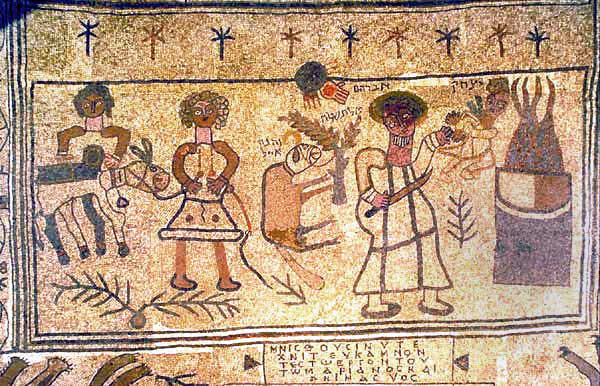Beit Alfa Synagogue
April 13th 2014
 In Israel, national parks tend to be so much more than places to enjoy the scenery. They often also serve as repositories for centuries worth of history. With its ancient mosaics depicting timeless Jewish motifs, the Beit Alfa Synagogue National Park, located on Kibbutz Heftziba near Beit She’an in the Jezreel Valley, is a prime example of this phenomenon.
In Israel, national parks tend to be so much more than places to enjoy the scenery. They often also serve as repositories for centuries worth of history. With its ancient mosaics depicting timeless Jewish motifs, the Beit Alfa Synagogue National Park, located on Kibbutz Heftziba near Beit She’an in the Jezreel Valley, is a prime example of this phenomenon.
While the park also contains some beautiful nature to explore, tour participants primarily visit to see the remains of the Beit Alfa Synagogue. The structure’s stunning mosaic floors were built nearly 1500 years ago. In 1928, kibbutz members found the mosaic floors quite by accident while working on an irrigation project. Formal excavations began in the following year. Although a dramatic finding in the early excavations included a cache of 36 coins from the Byzantine period, the Beit Alfa Synagogue is best known for its three main mosaic panels, each with a different theme.
The Northern Panel is dominated by five large figures and portrays the Binding of Isaac. If you’re familiar with the story as told in the Book of Genesis, you’ll recognize Abraham standing over Isaac. An image of a hand surrounded by fire, representing God’s intervention, appears in the top center. The ram that Abraham sacrificed instead of Isaac, and the two servants who accompanied Abraham and Isaac on the journey, are also pictured. Hebrew labels on the mosaic reveal that the artist who created it boasted a high level of Biblical and Hebrew literacy.
The Center Panel depicts the circle of a full year of zodiac signs with Hebrew labels. Scholars consider this mosaic to represent the relationship between Judaism and the Greek and Roman culture, where the zodiac system was popular. Similar zodiac wheels are found in synagogue floors in at least five other locations in Israel. Symbols of the four seasons are pictured in the four corners and you can see decorative moons and stars on this panel as well.
The Southern Panel is the one closest to where the Holy Ark must have stood when the synagogue was active. It is decorated with Temple-related images such as menorahs, shofars, etrogs, lulavs and pans for burning incense offerings. Since all these symbols had a role in the Holy Temple in Jerusalem, scholars believe this mosaic was intended to demonstrate the community’s memory of the central importance of the Temple, even though it had been destroyed 600 years previous to the mosaic’s construction.
A dramatic audiovisual presentation, based on Greek and Aramaic inscriptions found in the synagogue, recreates for visitors how the decision to fund the original mosaic floors might have been made.











